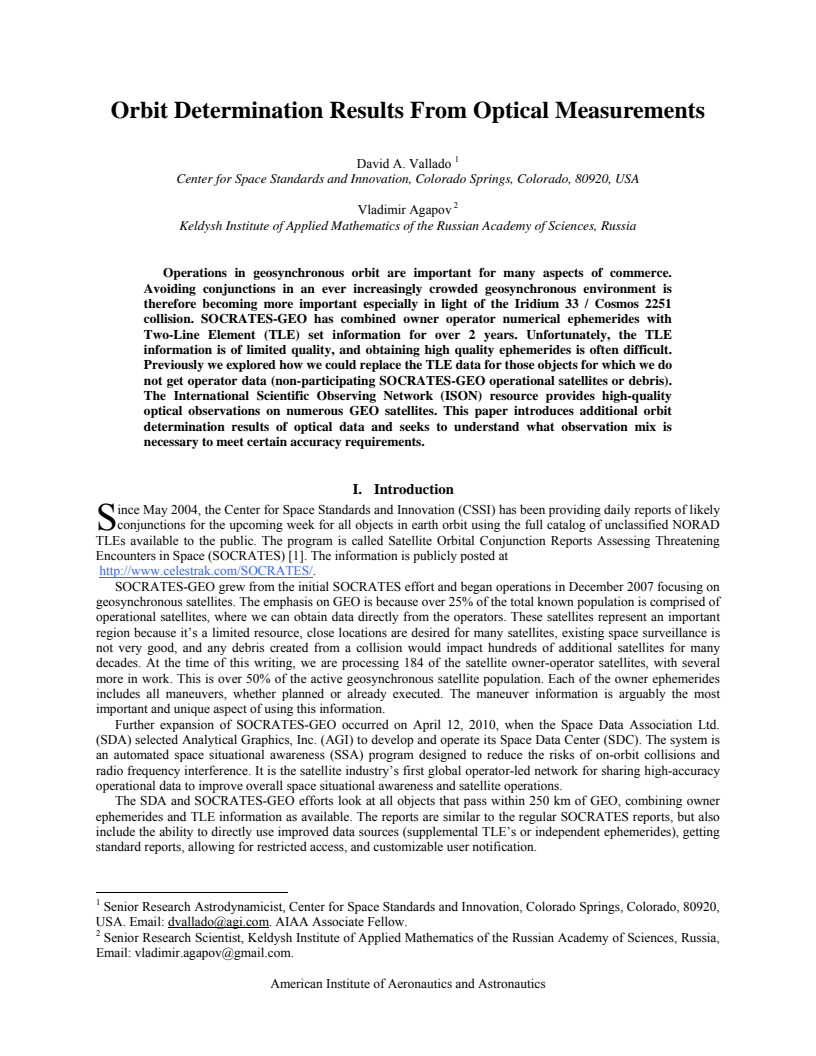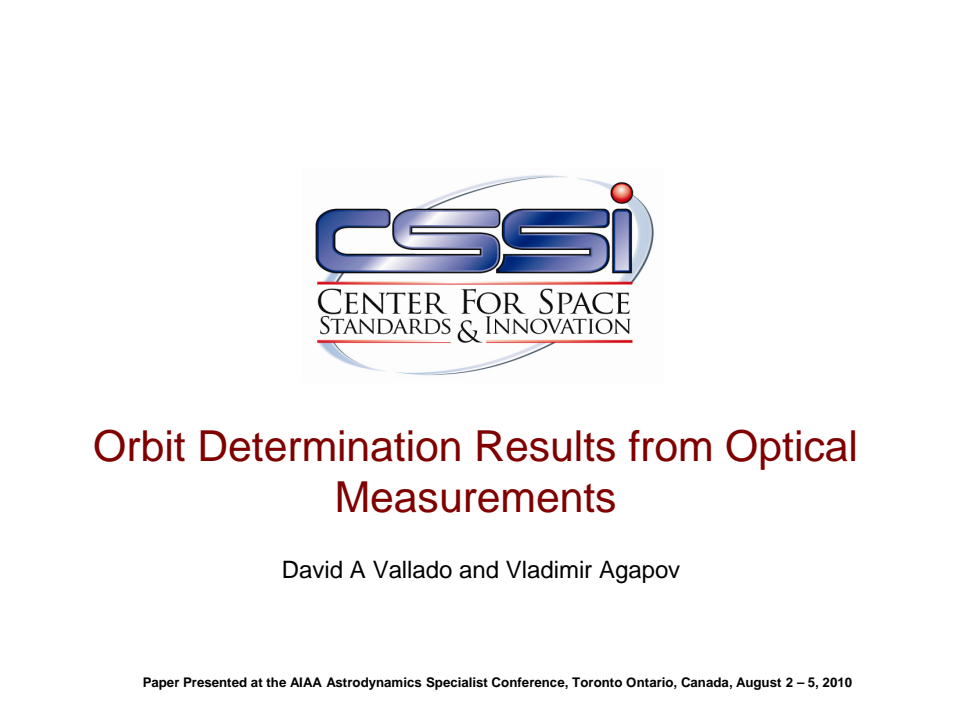Orbit Determination Results From Optical Measurements


Id: 293
Type: Conference paper
Published: 08/02/2010
Event: AAS/AIAA Astrodynamics Specialist Conference 2010
Authors:
Click an author to filter the list of related assets below.Abstract:
Operations in geosynchronous orbit are important for many aspects of commerce. Avoiding conjunctions in an ever increasingly crowded geosynchronous environment is therefore becoming more important especially in light of the Iridium 33 / Cosmos 2251 collision. SOCRATES-GEO has combined owner operator numerical ephemerides with Two-Line Element (TLE) set information for over 2 years. Unfortunately, the TLE information is of limited quality, and obtaining high quality ephemerides is often difficult. Previously we explored how we could replace the TLE data for those objects for which we do not get operator data (non-participating SOCRATES-GEO operational satellites or debris). The International Scientific Observing Network (ISON) resource provides high-quality optical observations on numerous GEO satellites. This paper introduces additional orbit determination results of optical data and seeks to understand what observation mix is necessary to meet certain accuracy requirements.
Citation:
Vallado, David A. and Vladimir Agapov. 2010. Orbit Determination Results from Optical Measurements. Paper AIAA-10-7525 presented at the AAS/AIAA Astrodynamics Specialist Conference, August 2-5. Toronto, Canada, accessible at https://comspoc.com/Resources/Content/Private/C-20220425T155222/Paper/AIAA%2010-xxx%20Orbit%20Determination%20Results%20from%20Optical%20Data.pdf.
Papers with related authors:

ORBIT DETERMINATION ISSUES AND RESULTS TO INCORPORATE OPTICAL MEASUREMENTS IN CONJUNCTION OPERATIONS
Read More